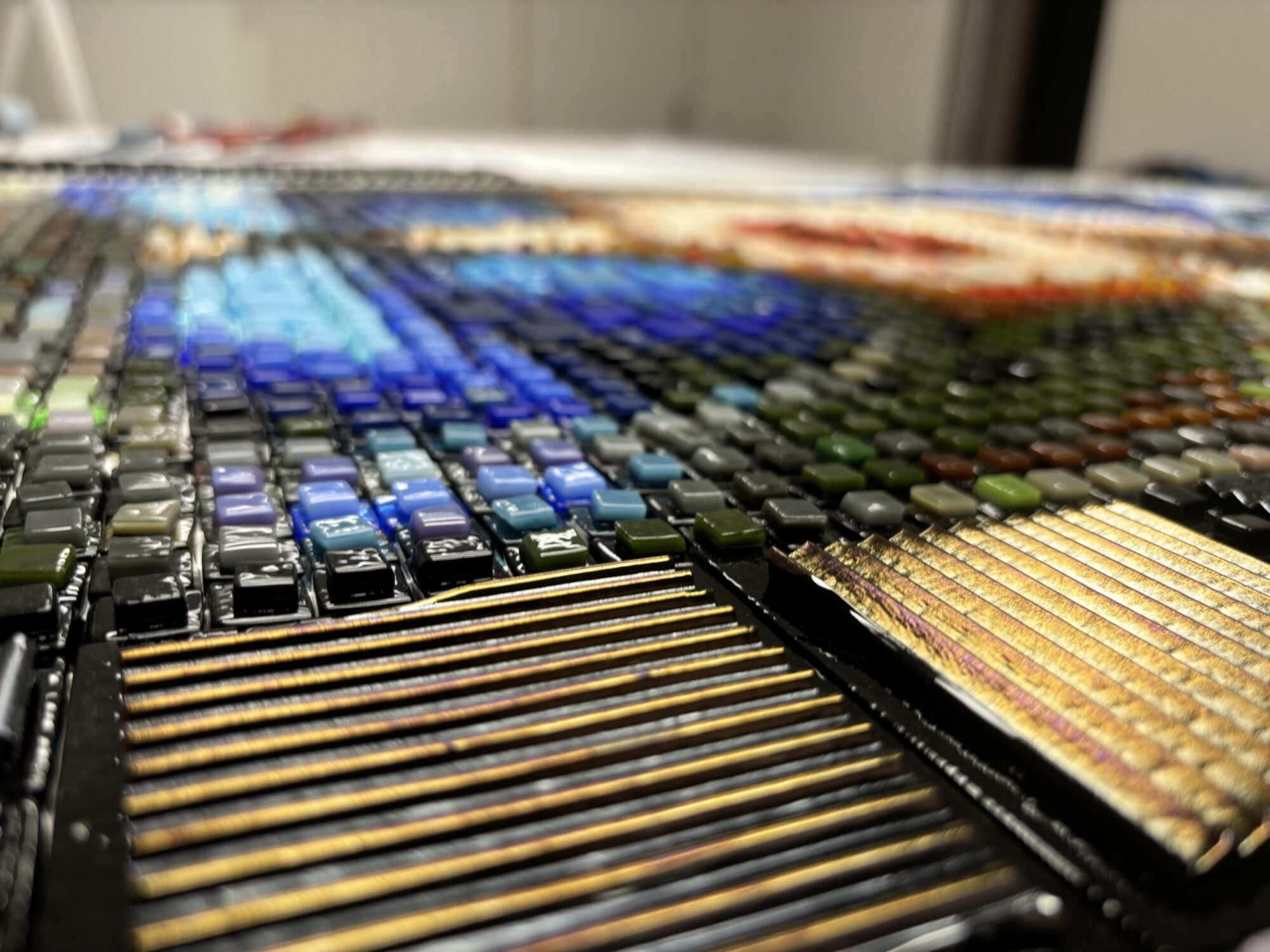How is glass pixel artwork created?
Making a glass pixel artwork is an intensive process of many hours of manual work. Depending on the portrait, a color palette of glass must first be put together. Combinations are then created from this selected transparent, opal and textured fusing glass (Bullseye and Oceanside Glass…). The individual glass pieces are all cut and broken by hand. These glass pieces are arranged on kiln shelfs and are next heated in the kiln to +/- 700°C. This way the glass pixels will melt together (glass fusing). One firing, from slow controlled heating to delayed cooling, can easily take 24 hours. One portrait requires 2 to 6 stokes.
All fused glass pieces are then arranged into the desired portrait. Once this is completed, they are transferred and finally glued to the carrier (glued on laminate or malinated MDF board or Dibond).
How many pieces of glass does a work of art consist of?
A work of art can contain up to 30,000 glass pieces.
What is glass fusing?
Allthough recent artists seem to claim they invented the glass fusing technique and claim they patented it, it is the OLDEST technique used in glass art in which pieces or strips of glass of the same or different colors are joined together by partially fusing them. Glass fusing also offers the option of allowing the different colors of glass parts to merge or to mix.
Tack fusing is kilnforming technique wherein different pieces of glass are heated in a lower temperature range until they’re just hot enough to stick together, but not so hot that they lose their individual characterics or fuse flat.
Although the exact origin of the glass fusing technique is not established with absolute certainty, there is archaeological evidence that the Egyptians already 2000 years BC. were familiar with the basic technique. Until the development of glassblowing, fusing was the only way to make objects from glass and therefore this technique cannot be patented.
How much does a glass portrait weigh?
Depending on the dimensions, a portrait weighs between 10 and 50 kg. The portraits are therefore provided with durable metal wall hooks.
How are the portraits finished?
All portraits are provided with a high-quality black brushed aluminium frame.
Can the glass pixels come loose?
No. We use clear adhesive based on SMX Hybrid Polymer technology. Suitable for internal and external use. We use laminated or malinated MDF or Dibond as a carrier for the artwork because plexiglass tends to have poorer adhesion.
Is each glass work of art unique?
Large works are usually one of a kind. Smaller works are mostly offered in a series. But the works are never exactly the same.
Do you make custom works of art?
Qwartz offers the possibility to embellish your home or business space with a work of art that is completely executed according to your wishes.

